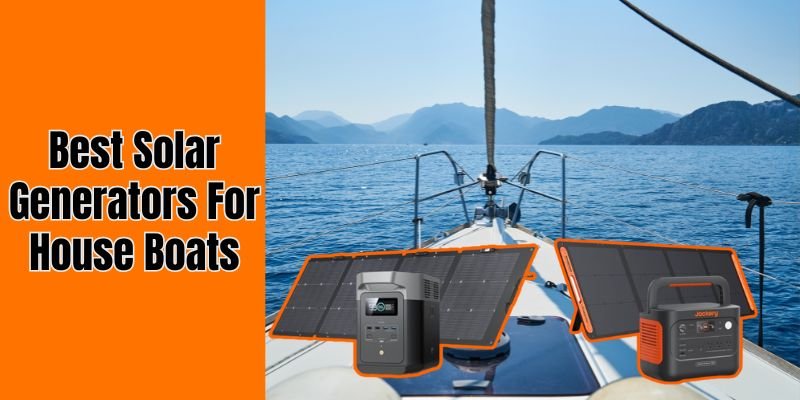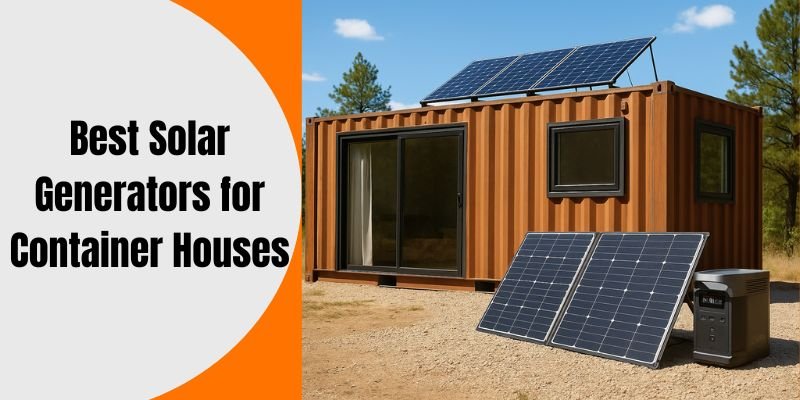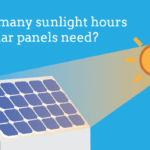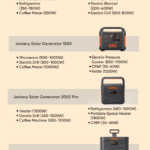Disclosure: This post contains affiliate links and I will be compensated if you make a purchase after clicking through my links. Learn More
Understanding solar panel basics helps you make informed decisions about energy solutions for homes or businesses. The sun’s power can be harnessed to reduce energy bills and environmental impact. As solar technology advances, it becomes more accessible to everyone. Learning about solar panels involves knowing how they work, their types, and benefits.
This knowledge empowers you to consider solar energy as a viable option. It is crucial for those looking to embrace sustainable practices. Solar panels offer an opportunity to use clean energy, reducing reliance on fossil fuels. This introduction aims to provide a solid foundation for understanding solar panels and their potential impact on your energy choices.
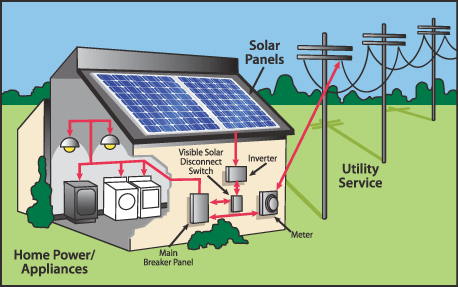
Credit: www.myscsolar.com
Introduction To Solar Panels
Solar panels have become a popular energy solution worldwide. They convert sunlight into electricity. This sustainable energy source reduces reliance on fossil fuels. Solar panels offer an eco-friendly alternative. They help lower electricity bills. Many homeowners and businesses are opting for solar panels. Understanding solar panel basics is essential. It helps make informed decisions about energy needs.
Why Choose Solar Energy?
Solar energy is clean and renewable. It does not produce harmful emissions. This makes it environmentally friendly. Solar panels can reduce energy costs significantly. Sunlight is free and abundant. Solar energy supports energy independence. It reduces reliance on nonrenewable resources. Investing in solar energy can increase property value.
History Of Solar Technology
The history of solar technology is fascinating. It began in the 19th century. Scientists discovered the photovoltaic effect. This discovery laid the foundation for solar energy. In the 1950s, the first solar cells were developed. They were expensive and used in space technology. Over the years, advancements made solar panels more affordable. Today, solar technology is widely accessible. It continues to evolve and improve.
How Solar Panels Work
Understanding how solar panels work can be fascinating. They transform sunlight into electricity. This process powers homes and businesses. Solar panels are vital for harnessing solar energy. Let’s delve deeper into their function.
Photovoltaic Cells Explained
Solar panels consist of photovoltaic cells. These cells are the core components. They are made from semiconductor materials. Silicon is commonly used. The cells capture sunlight and convert it into energy. This conversion is essential for solar power generation.
Conversion Process
The conversion process begins with sunlight hitting the cells. Photons from sunlight excite electrons in the semiconductor. This excitement creates an electric current. The electric current flows through the panel. It is then transformed into usable electricity.
Solar panels have several layers. Each layer plays a role in energy conversion. The top layer captures sunlight. The middle layer facilitates electron movement. The bottom layer helps collect the electric current.
Inverters convert direct current (DC) to alternating current (AC). AC is used in most homes. This conversion is crucial for powering household appliances.
Types Of Solar Panels
Solar panels are an exciting technology that allows you to harness the sun’s energy. Understanding the different types of solar panels can help you make informed choices for your energy needs. Let’s dive into the world of solar panels and explore some popular types.
Monocrystalline Panels
Monocrystalline panels are made from single-crystal silicon. They are known for their high efficiency and sleek appearance. These panels often have a higher price tag, but their performance in terms of energy output is top-notch.
When I first considered solar panels for my home, monocrystalline was my choice due to their efficiency in smaller spaces. If space is a constraint for you, these panels might be the perfect fit. They are ideal for those who want the most energy from limited roof space.
Imagine a scenario where every inch of your roof counts. Wouldn’t you want the best return on investment? Monocrystalline panels might be your answer.
Polycrystalline Panels
Polycrystalline panels are made from multiple silicon crystals. They are generally more affordable than monocrystalline panels. While they are less efficient, they are still a reliable choice for many homeowners.
My neighbor opted for polycrystalline panels because he had a larger roof area and needed a cost-effective solution. These panels offer a balance between price and performance, making them accessible to more people.
Think about your budget and space. Would you prefer to save on initial costs while still benefiting from solar energy? Polycrystalline panels might be the way to go.
Choosing the right type of solar panel depends on your specific needs. Consider your budget, space, and energy goals. Which type of panel resonates with your situation? The choice you make will impact your energy future.

Credit: www.nationalgridus.com
Benefits Of Solar Energy
Solar energy offers numerous benefits. It stands out as a clean, renewable source of power. This energy reduces reliance on fossil fuels, which are limited and harmful. Installing solar panels can transform homes and businesses. It’s not just about reducing electricity bills. Solar energy helps the planet and saves money over time.
Environmental Advantages
Solar energy is eco-friendly. It reduces air pollution significantly. Fossil fuels release harmful gases. These gases damage the environment. Solar panels generate power without emissions. They help reduce carbon footprint. This aids in combating climate change. Solar energy supports a healthier planet.
Economic Savings
Solar panels cut electricity costs. They harness sunlight to generate power. This reduces dependency on grid electricity. Over time, savings can be substantial. Initial investment is high, but long-term benefits are clear. Many regions offer tax incentives for solar installations. These incentives further reduce costs. Solar energy is a smart financial choice.
Installing Solar Panels
Installing solar panels can transform your energy use. This process involves several steps to ensure efficiency. Proper installation maximizes energy savings and reduces electricity bills. Understanding the basics helps in making informed decisions.
Site Assessment
Site assessment is the first step in installing solar panels. Experts evaluate your roof’s condition and orientation. They measure the sun’s exposure to your property. A good site gets sunlight most of the day. Trees or buildings blocking the sun reduce efficiency. The assessment determines the best panel placement for maximum energy capture.
Installation Process
The installation process begins with preparing the roof. Technicians install mounts to secure the panels. They ensure these mounts withstand harsh weather. Next, they place the solar panels on the mounts. Proper alignment is key for optimal sun exposure. After panel placement, they connect the wiring. This connects your system to the electrical grid. Finally, they test the system for efficiency. This ensures everything works perfectly.
Maintenance And Care
Solar panels are a great investment for clean energy. To get the most from them, regular maintenance is necessary. Proper care ensures efficiency and longevity. Understanding basic maintenance can prevent bigger issues later. Let’s explore some essential care tips.
Routine Cleaning
Dust and dirt can cover solar panels. They block sunlight. This reduces the panel’s efficiency. Clean panels every few months. Use soft brushes or cloths. Avoid harsh chemicals. Plain water often works best. In dry areas, clean more often. Rain can help in wet areas. But it’s not enough alone.
Troubleshooting Common Issues
Sometimes, panels face issues. Common problems include reduced output or damage. Check the connections first. Loose wires can cause trouble. Inspect the panels for cracks or breaks. Shading affects performance too. Trim trees that block sunlight. If problems persist, call a professional. Regular checks help keep panels efficient.
Financial Incentives
Financial incentives make solar panel installations more affordable. Governments offer rebates and tax credits for adopting solar technology. These benefits reduce costs and encourage more people to use clean energy.
When considering solar panels for your home, the financial incentives can significantly impact your decision. These incentives not only reduce the initial cost but also enhance the long-term savings on your energy bills. Understanding these benefits can make you more confident about going solar.
Tax Credits
Tax credits are a powerful way to decrease the upfront cost of installing solar panels. The federal solar tax credit, also known as the Investment Tax Credit (ITC), allows you to deduct a percentage of your solar installation costs from your federal taxes. In 2023, you can deduct up to 30% of your installation costs.
Imagine reducing your tax bill by thousands of dollars just for making an eco-friendly choice. Isn’t that a win-win situation? However, remember that tax credits are available only to those who owe taxes, so it’s essential to assess your tax situation.
Government Grants
In addition to tax credits, government grants can further ease the financial burden of going solar. These grants are often available at the state or local level. They can cover a portion of your installation costs or provide funding for additional solar-related projects like energy storage systems.
For instance, a friend of mine applied for a state grant and received funding that covered 20% of his solar installation costs. It felt like a reward for taking a step towards sustainability.
Wouldn’t you agree that tapping into these grants is a smart financial move? It’s worth checking the specific programs available in your area, as they can vary widely.
By taking advantage of these financial incentives, you not only invest in a sustainable future but also make a savvy financial decision. What steps will you take next to explore these benefits?
Future Of Solar Technology
Solar panels capture sunlight and transform it into electricity. Future advancements will improve efficiency and affordability. Cleaner energy solutions promise a sustainable world.
The future of solar technology holds tremendous promise. With rapid advancements, solar energy is more accessible and efficient than ever. As you consider adopting solar energy, understanding its evolving landscape can help you make informed decisions.
Innovations In Efficiency
Recent years have seen significant improvements in solar panel efficiency. New materials like perovskite have emerged, offering higher energy conversion rates. Imagine solar panels that not only capture sunlight but also perform well on cloudy days.
Energy storage is another area seeing breakthroughs. Modern batteries can store more energy, ensuring a steady power supply even when the sun isn’t shining. This means you can rely on solar energy more consistently, reducing dependence on the grid.
Global Adoption Trends
Countries around the world are embracing solar energy at unprecedented rates. China and India, for example, have made significant investments, scaling their solar capacity rapidly. This global shift is driving down costs, making solar more affordable for everyone.
In your neighborhood, you might notice more homes with solar panels on their roofs. Community solar projects are also on the rise, allowing those without suitable rooftops to benefit from solar energy. Could your community be next in line for a solar revolution?
As solar technology continues to evolve, it’s crucial to stay informed. Are you ready to explore the possibilities that solar energy offers for a sustainable future?
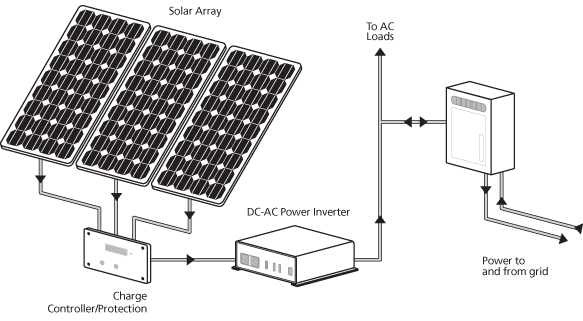
Credit: samlexamerica.com
Frequently Asked Questions
What Are The Basics Of Solar Panels?
Solar panels convert sunlight into electricity using photovoltaic cells. They consist of silicon layers that create electric fields. Panels are installed on rooftops or open spaces to capture sunlight. They help reduce electricity bills and are eco-friendly. Regular maintenance ensures efficiency and longevity.
Solar energy is a renewable resource.
What Is The 20% Rule For Solar Panels?
The 20% rule for solar panels suggests oversizing your solar system by 20% to account for energy loss. This ensures consistent energy production despite factors like weather or panel inefficiencies. This approach enhances energy reliability and maximizes solar panel effectiveness throughout the year.
Why Is My Electric Bill So High If I Have Solar Panels?
Your electric bill may be high due to increased energy usage, insufficient solar panel capacity, or inefficient appliances. Seasonal changes and cloudy weather also impact solar energy production. Ensure your system is functioning properly and consider energy audits to identify other potential issues.
What Can A 1000w Solar Panel Run?
A 1000W solar panel can power small appliances, lights, and gadgets. It can run a refrigerator, TV, computer, and charge batteries, depending on energy consumption and sunlight availability. Ensure proper energy management for optimal use.
Final Thoughts
Solar panels offer a clean energy solution. They harness the sun’s power efficiently. Understanding basics can save money and reduce carbon footprint. Easy installation makes them accessible to many. They provide long-term benefits. Maintenance is simple, with few moving parts.
Investing in solar can be a smart choice. It’s a step towards sustainable living. Consider your home’s energy needs and budget. Solar panels can meet both. Start small or go big. Every bit helps in conservation. Embrace solar energy. It’s a bright idea for future generations.

